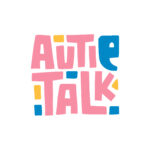Feeling heard, accepted, and a sense of belonging is an integral part of being a human being. However, all too often, Autistic people feel rejected, dismissed, alienated, and alone in their experiences. In a recent survey of the experiences of 144 Autistic adults, 49% of the individuals surveyed rarely or never felt a sense of belonging amongst other people in their lives. This is despite the majority (72%) feeling that it is very important to feel heard, accepted, and/or that they belong.
Despite these devastating statistics, the silver lining is this: Autistic people can be united together with our similar lived experiences. Through one other, we may find the belonging, acceptance, and validation that we have long searched for. This is where the concept of peer support comes in.
What is peer support?
Peer support is when people with similar lived experiences come together to support each other. It can be informal, such as catching up with a like-minded friend. Or it can be formal; for example, attending a peer support group. It is not unusual for neurotypical individuals to feel connected with others around them and have their experiences be understood and shared by others. Peer support in these instances comes naturally and is readily available.
However, for us Autistic individuals, it can be hard to find “our people”. We are a neuro-minority after all; most humans in the world are not Autistic. Therefore, we can benefit from actively seeking out connection with fellow neurodivergent peers.
How can peer support benefit Autistic people?
Connecting with other Autistic people brings several benefits to our lives. For instance, peer support can help us to:
- Foster meaningful connections with others
- Feel a sense of belonging
- Develop a deeper understanding of ourselves
- Reduce feelings of loneliness
- Become part of a collective voice for the Autistic community
- Improve mental health and wellbeing
Where’s the evidence?
There is growing evidence to support claims about the benefits of peer support for Autistic individuals. In a 2020 study, 12 Autistic adults were interviewed about how it feels to spend time with friends and family that are Autistic versus neurotypical. Common themes emerged amongst those interviewed.
Firstly, spending time with other Autistic people was described as feeling easier than spending time with neurotypical people. The Autistic adults felt more comfortable and better understood with fellow Autistic peers. There was less social pressure or judgement, making interactions a lot easier to engage in.
Secondly, the Autistic adults described feeling like they were in a social minority. To spend time with neurotypical people in their life, they had to conform to what was wanted or expected from them. This is a huge barrier in terms of feeling connection, belonging, and the ability to show up authentically in the world.
Thirdly, the Autistic adults felt more belonging with other Autistic people. They described that they could be themselves around them. There was less of a need to mask or camouflage (hide Autistic traits or socially adapt to appear “normal”), because there was a mutual understanding and acceptance of Autistic ways of interaction.
Lastly, spending time with Autistic peers was an important way of maintaining mental health and wellbeing. It was described as a way of building resilience to manage everyday life in a mostly non-autistic world. Several recent studies echo these key findings about the benefits of peer support for Autistic people (e.g. 1, 2, 3).
What are some ways to connect with other Autistic people and gain peer support?
There are a few different ways that we can gain peer support from other Autistic individuals. Here are some ideas:
- Connect with Autistic professionals, such as Autistic coaches, mentors, support workers, psychologists, counsellors, or other therapists. These professionals can be a potential way to gain a sense of validation, understanding, and support that is anchored in lived experiences of autism.
- Attend an autism support group for Autistic adults in your area. This is a great way to meet other Autistic individuals, gain peer advice or support, have fun, and make friends.
- Join online events or groups for Autistic adults. There are a variety of different events available to Autistic adults, such as educational webinars, programs, group coaching sessions, peer support group events, and more.
- Seek out support or connect with other Autistic people through Facebook peer support groups or other social media groups. There are some great groups out there that are neurodiversity-affirming and a safe space to seek out peer advice, vent, or share insights with others.
- Watch or follow Autistic content creators on YouTube, TikTok, Instagram, Facebook, or other social media platforms.
Key Takeaways
Navigating life as an Autistic person in a neurotypical world isn’t always easy. In fact, sometimes, it can feel downright lonely. Most humans need a sense of belonging, connection, and acceptance in their lives to thrive. A great way to achieve this as an Autistic person is through gaining peer support from fellow Autistic individuals. With each other, we can feel part of a community, that we belong, and can be our authentic selves. As Brene Brown put it, “True belonging doesn’t require us to change who we are; it requires us to be who we are.”
Article written by our highly talented researcher and writer Amy Adams.
